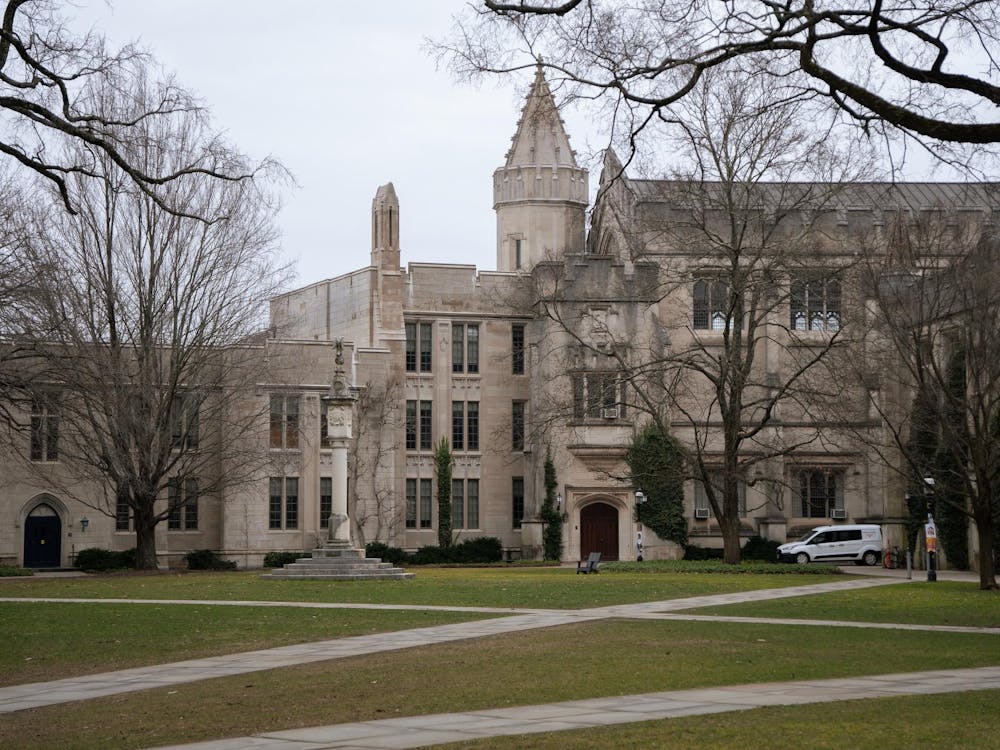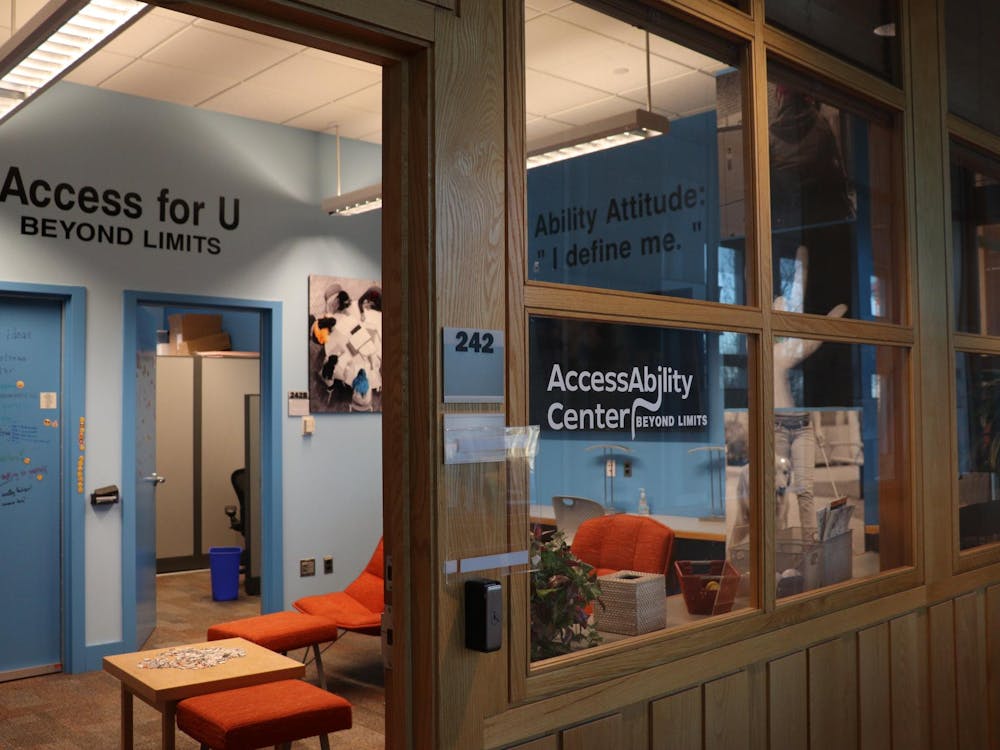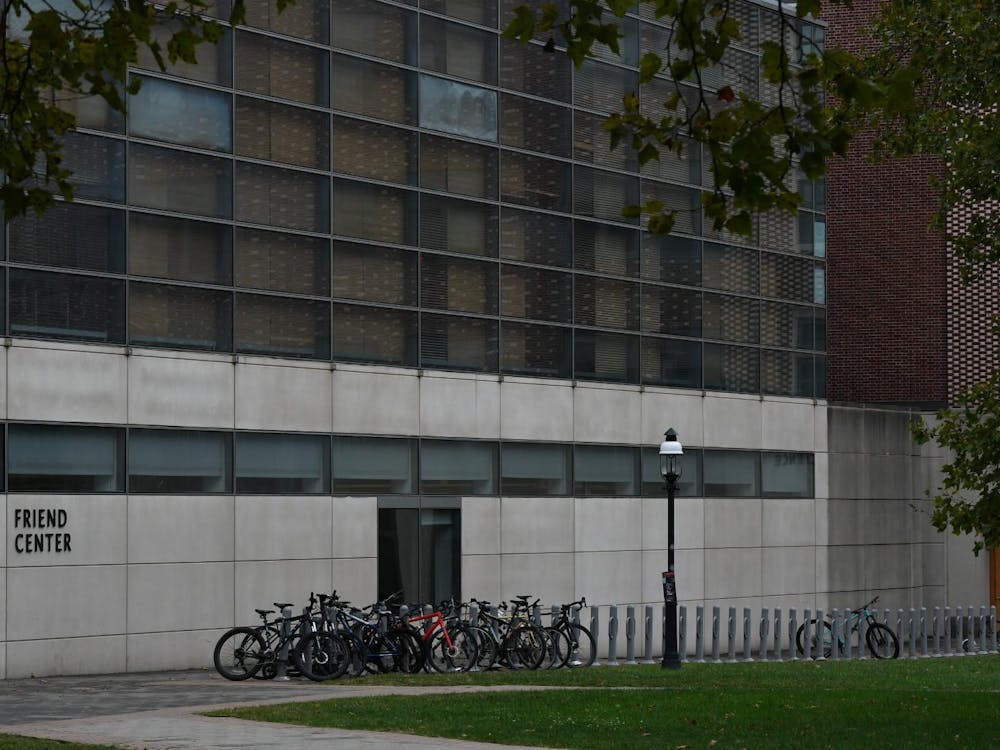“We lured a girl into the Large Hadron Collider.”
“Herman Cain has already received a carefully groomed mustache.”
"We tried to eat our spectacular students."
These are just three examples of the randomly generated non sequiturs produced by What Would I Say, a website developed by seven Princeton graduate students during last weekend's HackPrinceton event. The website, which generates fake, semi-coherent Facebook statuses based on a user's prior Facebook activity, has gone viral, receiving over 1 million hits from 300,000 unique visitors. The sitewas featured in The New Yorker and Business Insider.
Pawel Przytycki GS, Ugne KlibaiteGS, Vicky Yao GS, Edward Young GS, Bolong Cheng GS, Daniel Jiang GS and Alex Furger GS collaborated to create the website, which was entirely designed and built during HackPrinceton's 48-hour timeframe.The team, which said it never expected the site to become as big as it has, noted that its sudden popularity has brought unforeseen problems.
“I think it’s funny to note that the site is actually losing money right now,” Young said. “So we have no ads right now, and we are paying for server costs out of pocket. And server costs are cheap until you start getting like 600,000 hits.”
The team has discussed putting up advertisements to cover the costs but isn’t sure how it will proceed.
“We thought server costs would be minimal,” Furger said, “but once you hit like one million page views, it’s like, ‘Oh, god.' We don’t want to have ads, but we might need to do something small or an ad on our Facebook page."
"We don’t care about making any money," Furger added. "We just don’t want to lose money.”
The idea for the site originated at HackPrinceton, as the team sat down to discuss ideas for its 48-hour project.
“It happened really organically,” Przytycki said. “We were just throwing around ideas at the hackathon, and I said, 'Oh, this is something I’ve always wanted to try out.' People had already been building bots that would chat with you based on responding to what you would say, and ... we figured that Facebook was a great source of information.”
Furger and Klibaite said they were also motivated to create the site by a prize that Facebook was offering for the HackPrinceton project that best used Facebook information. What Would I Say takes information from a user's previous statuses, posts on his or her own wall and captions on his or her photos.

“We talked about making the bot, and then we were trying to decide where we would find the data,” Furger said. “Since Facebook was offering a prize for the best integration of their website ...”
“We wanted swag,” Klibaite interrupted, referring to the Facebook gear the company gave away at the event. The team received four laptop bags and two Facebook hats, and it will receive hoodies, they said.
The team members said they met a Facebook employee at HackPrinceton who is currently in communication with them about improving What Would I Say and its Facebook integration. HackPrinceton was integral to the website's creation for the creative atmosphere it provided and the connections they were able to build from it, Young said.
“HackPrinceton was amazing,” Young said. “We wouldn’t have been able to do it without HackPrinceton. Ultimately, we would have spent our weekend dicking around watching football or something.”
While the idea emerged organically, the creation of the website involved a lot of testing and hard work, the group said.The website is based off of a Markov chain, a famous mathematical system that can generate real-looking random text given a sample document. Markov chains are often used to generate fake text that seems to make sense. They provide the mathematical background for a number of Internet applications, most notably Google's PageRank algorithm that determines the order in which websites appear on Google searches.
“We did a lot of tuning to make sure it was random enough that it was funny or amusing,” Young said, “but not so much that it was just random phrases. We also had the problem where it would just print out an old status. That’s no fun. Balancing those two and trying to make the fake statuses have that right feel was our main focus.”
Despite the server costs, the team said it was delighted at the website’s success and the publicity it has attracted.
"We immediately got in the same room as soon as we heard from The New Yorker," Furger said. "We were all like, 'This is incredibly cool.' "
Klibaite said her parents were perplexed by the website.
"I forwarded it [the article in The New Yorker] to my mom and my dad, and my parents were like, 'Why would anyone do this?' " Klibaite said.
Natalie Villasana, a freshman at Oberlin College, discovered What Would I Say Tuesday afternoon.Villasana said she felt like the site was a “throwback” because most of her statuses were from a few years ago.
“It’s kind of addictive,” Villasana said. “There’s definitely an element of narcissism that appeals to people because they feel like they created the fake status. And, in a way, they did.”








